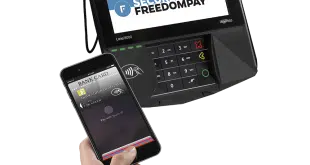Last month, we noted 81 years since the devastating attack on Pearl Harbor. The leaders of the day, smart and learned, did not draw timely conclusions from a very similar attack Japan unleashed on a Russian naval base in 1904. Nor did the same leaders pay much attention to Hitler’s autobiography, Mein Kampf.
These are two of many sobering examples illustrating how we are not very good at spotting seemingly out-of-the-blue catastrophes. Nouriel Roubini, the economist who predicted the economic collapse of 2008 (also ignored), is now predicting a convergence of mega threats with dire global consequences. Among them: severance of communication and transportation lines forcing society to a state of isolated pockets. Which brings us to the money aspect.
Money is a societal regulator, a means to manage human exchange of goods and efforts. Every society mints its money. Prison camps in World War II used cigarettes as currency. Small island communities traded with scarce sea shells. When I was a kid, we traded cards featuring sports figures.
No doubt, should we be afflicted by any of the anticipated threat scenarios, we will be cast into isolation. Local communities will have to bootstrap themselves. Digital-money technology is developed enough to allow a local authority to mint “disaster money,” distribute it to people’s phones—either through a local network or through peer-to-peer networks—and thereby facilitate a joint recovery effort, rewarding the strong and the helpful for their contribution. When the catastrophe is recovered from, the disaster money will trade according to a set exchange rate against a more encompassing currency, eventually repairing to national fiat money.
Isolated societies trade among themselves. They make do with a local network, with a local digital mint, and with bare minimum computational phones that can exercise the money-exchange protocol. After a storm, for instance, the first rebuilt facility is a local communication tower that can keep everyone in touch. The same network will facilitate payment.
Today’s peer-to-peer technology is developed enough to allow money to stream peer to peer through local phone-to-phone connections so that a digital payment migrates from payor to payee. A subtle advantage of modern digital money is distributed computation power. Payors’ and payees’ phones are crunching the payment algorithms to effect a payment, as opposed to relying on a large central processor.
Come to think about it, the idea of a collection of local mints serving a localized or segmented society is also an optimal deployment of digital money in normal times. Parallel mints will not mint their own currency. Rather, they will
mint their own brand of the fiat currency. Traders will readily exchange a Bank of America dollar with a Miami dollar because the exchanged entity is a claim check
for a dollar—one claim check honored by the Bank of America and the other honored by the city of Miami.
Mints will compete among themselves for the public trust. Unlike the term stablecoins, which really is a euphemism for probability-bound risk coins, a claim check for a dollar carries no extra risk beyond what is carried by the claimed dollar. The mints keep the claimable dollar in total-ready mode. They make their money through tethering services (see my book, Tethered Money). So mints will compete on service, responsiveness, and so on. The Bitcoin vision of decentralized money will be manifest in decentralized mints, with the Federal Reserve imposing a regulatory framework.
It turns out, then, that the most efficient way to power up society with digital-money technology is also the format for recovery from the paralyzing disasters that
may challenge society in years to come.
—Gideon Samid gideon@bitmint.com




